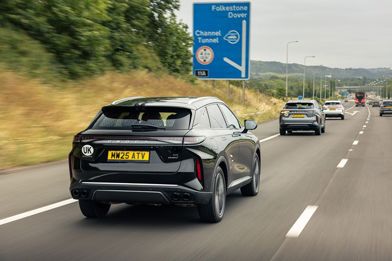Transport makes up around a quarter of Global Greenhouse Gas emissions (GHG). In New Zealand, this is closer to 40 per cent, so it’s no wonder there is a growing focus on reducing emissions in our transport sector, drawing on trends, learnings and technology from across the world.
Here, Stephanie Ward, partner, infrastructure advisory, KPMG New Zealand, summarises the top five trends that can influence our efforts in NZ and help us play our part in reducing emissions.

Private vehicles will remain part of our transport system, but people will need to be supported in switching to lower carbon vehicles
Cars and utes are likely to remain an important part of our transport system – there are practicalities and conveniences that come with private vehicles. Light vehicles – over four million of them - make up the majority of the NZ fleet and of our vehicle kilometres travelled.
So, if we can move the dial on our personal vehicle carbon emissions, then we can have a real impact on our climate change targets.
NZ is well placed to have an electric car fleet given our electricity generation is predominantly renewable. The good news is that the price of EVs has been coming down as the price of batteries reduces and the technology becomes more commonplace.
Secondhand EVs are also increasingly available; however, the upfront cost is still too high for many households. However, there are schemes in place now to reduce the cost of buying an EV, and there are also some exciting community projects bringing EV car sharing into lower income communities.
We can also take inspiration from other countries, including Norway, which our recent Net Zero Readiness Index ranked as first in the world for readiness to reach net zero transport emissions, and where the government has announced generous registration tax incentives and VAT exemptions.
Investing in our electricity networks and charging infrastructure will be critical to a sustainable shift
If we’re going to move our fleet away from Internal Combustion Engines (ICE) then we also need the electricity infrastructure to reliably support it – everything from electricity generation, to distribution, to accessible charging points. Some estimates suggest that charging an EV at home will add another two households’ worth of power, putting pressure on both bills and power grids.
However, there is exciting innovation happening in this space - technology helping to create smooth charging that eases pressure on networks is just one example. Investing in the network and charging infrastructure is crucial for our personal vehicles, for corporate fleets and for our public transport as bus fleets move to battery electric. The ongoing cost is certainly compelling: the Sustainable Business Network estimates that the cost of powering an EV is equivalent to spending 30c a litre on fuel, which at this point in time is a significant saving over fuelling ICE vehicles.
Planning our cities and towns to make it easier to take public transport, cycle or walk will help change habits
How our towns and cities are designed can have a significant impact on people’s travel habits. Investing in safe, dedicated cycle lanes or walkways, improving the reliability and reach of public transport, and making driving a less appealing option with less parking in town centres, are all ways that infrastructure can help reduce emissions. We’re also seeing people planning new urban developments with closer proximity between living, education, employment and other facilities so there are shorter distances to travel.
On the EV front, we’re already seeing charging points pop up in supermarket car parks and key locations but there is more to do. Singapore, for example, has committed to phase out ICE vehicles by 2040 and is investing heavily in charging points, aiming to reach 60,000 by 2030 – a massive jump from just 2000 currently.
We all have a part to play: a real behaviour change will be needed to move away from cars as the default for every journey
While central and local government have a considerable role, there are things individuals can do to help. It requires us to stop reaching straight for the car keys for every journey and instead consider other options like taking the train or walking. Car sharing is another useful tool that some employers are incentivising to reduce the number of cars on the road completing similar journeys.
We’re seeing governments around the world looking at ways to incentivise changes in behaviour, such a changing the relative cost of driving versus public transport or cycling, improving safety and reliability of alternative modes, and making sure people are well informed on the alternative modes available. Here at home, Waka Kotahi has been working with several councils to develop regional mode shift plans.
Another shift (and probably the most achievable) is to consider being more efficient when we are using our cars, aiming to reduce the length of trips or the number, by ticking off more tasks in a single journey.
Don’t forget the role of freight in transport
Alongside our changes in personal transport, we also need to bring down the emissions from how we move our goods around New Zealand. Heavy trucks account for nearly 25 per cent of all greenhouse gas (GHG) road emissions, so investment and innovation are essential to start bringing this down. Work is already underway on hydrogen and electric heavy vehicles and refueling networks, and we have seen some good investment in rail and coastal shipping, which can emit much lower emissions than road freight. There’s also increasing regulation and innovation in these areas, looking at alternative fuels, better energy efficiency and materials to lower the impact even further.
Remember, GHG emissions from transport have increased at a faster rate than any other energy end-use sector, leading to more than twice the emission volume since 1970. This is only getting more urgent so playing our part in reducing emissions and shifting our mindsets is vital – and considering an EV opens up a whole new world of cars to test drive...


